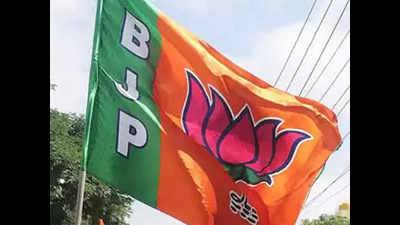- News
- City News
- lucknow News
- Thakurs, other upper castes remained loyal to BJP in Uttar Pradesh in LS polls: Survey
Trending
Thakurs, other upper castes remained loyal to BJP in Uttar Pradesh in LS polls: Survey
A recent survey by the Centre for the Study of Developing Societies (CSDS)-Lokniti revealed that the BJP maintained strong support from upper castes, especially Thakurs, in Uttar Pradesh. The party's decline in the state was attributed to a shift in voting patterns among non-Jatav Dalits and some non-Yadav OBCs towards the INDIA bloc, impacting the election outcome.

Representative image
“The outcomes may largely be attributed to change in caste and community voting patterns,” said Prof Shashi Kant Pandey, faculty member political science department, Babasaheb Bhim Rao Ambedkar University, who was part of the survey along with Prof Mirza Asmer Beg of Aligarh Muslim University and Akhilesh Pal of Allahabad University.

“Our survey showed that 79% upper caste -- especially Brahmins and Thakurs -- largely favoured the BJP while only 16% of them backed the INDIA bloc. Compared to this, 77.2% upper caste voters preferred the BJP in 2019. The numbers are even more staggering when it comes to Thakurs' support to the BJP,” Prof Pandey said.
Prof Mirza Asmer Beg added: “A closer look reveals that close to 9 of every 10 Thakur (Rajput) voters (89%) favoured the BJP, dispelling reports and rumours that they were unhappy with the saffron party. In 2019, the corresponding number was 82%.”
What eroded the BJP's vote share -- and added to the INDIA bloc's tally -- was fall in support from other caste groups -- OBCs and Dalits. While the drift towards the INDIA Bloc was sharp in the case of non-Jatav Dalits, it was noticeable among non-Yadav OBCs and even Yadavs and Muslims. Jatavs left BSP in droves and divided almost equally between the BJP camp and INDIA Bloc.
The survey shows that in 2019, about 14% Jatavs and 40.5% non-Jatav Dalits voted for the BJP but in 2024, 24% Jatavs and 29% non-Jatavs went with the saffron party. On the contrary, nearly 59% non-Jatavs and 25% favoured the India Bloc. While 44% of Jatavs still remained with the BSP, its support among non-Jatavs dwindled to just 15%. The same survey conducted in 2019 reveals that over 66% of the Jatavs had voted for the SP-BSP Mahagathbandhan in 2019 while only 38% non-Jatavs had favoured the Mahagathbandhan.
"Clearly, the BSP's loss was also a gain for the INDIA bloc," says Prof Beg.
Apart from these trends, a comparative study of 2019 and 2024 surveys reveal that INDIA bloc nibbled away BJP’s voter base across different castes and communities. “In 2019, over 21% of the Yadavs had voted for the BJP when it faced the SP-BSP alliance. In 2024 only 15% of them stood with the saffron party's alliance. Likewise, 61% of the Kurmi-Koeris voted for the NDA in 2024 as compared to 73.8% in 2019. Overall, a fall in BJP’s vote share among the non-Yadav OBCs – from 66.7% in 2019 to 59% in 2024 – was noted,” said Prof Pandey.
He also said that while the SP-led alliance remains a preferred choice among Muslims, this time the INDIA bloc was able to pull their votes like a magnet. “Over 92% of the Muslim voters chose the Rahul and Akhilesh duo. The remaining 5% went with the BSP and only 2% voted for the NDA,” he said. "In 2019, nearly 6.7% Muslims were seen supporting the NDA," he added.
Talking about some other observations, Mirza Asmer Beg said: “Samajwadi Party’s PDA (Pichada or backward, Dalit and Aplsankhyak or Muslim) worked well for it and helped in shunning its largely MY (muslim-yadav) image. Besides, it elevated the prospects of the Congress party in UP.”
The experts also noted that good coordination between INDIA bloc leaders Rahul Gandhi and Akhilesh Yadav worked as a cohesive element between them while the fact that many sitting BJP MPs had lost their touch with their electorate emerged as its main weakness in the field.
“The distance between sitting BJP MPs and the voters gave the INDIA bloc an opportunity to fan the fear (among OBCs and Dalits) that BJP would change the Constitution if voted to power, especially after some of its leaders made statements to this effect. Their apprehension was further compounded by BJP announcing its target of 400 seats (abki baar char sau paar) and BJP could not counter this narrative,” explained Prof Pandey.
End of Article
FOLLOW US ON SOCIAL MEDIA











